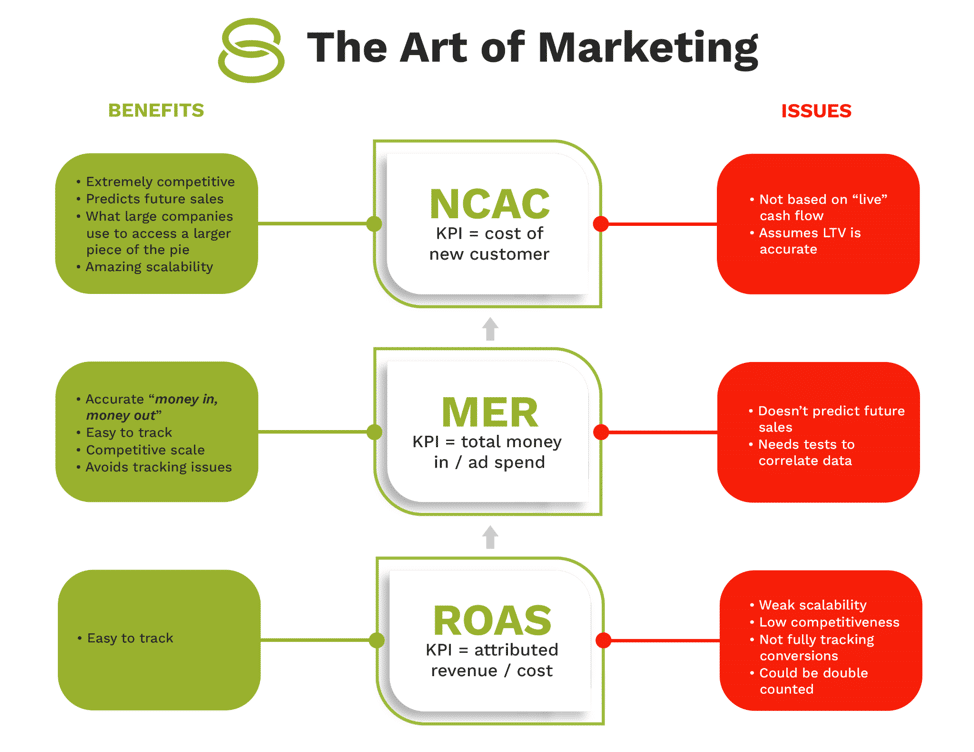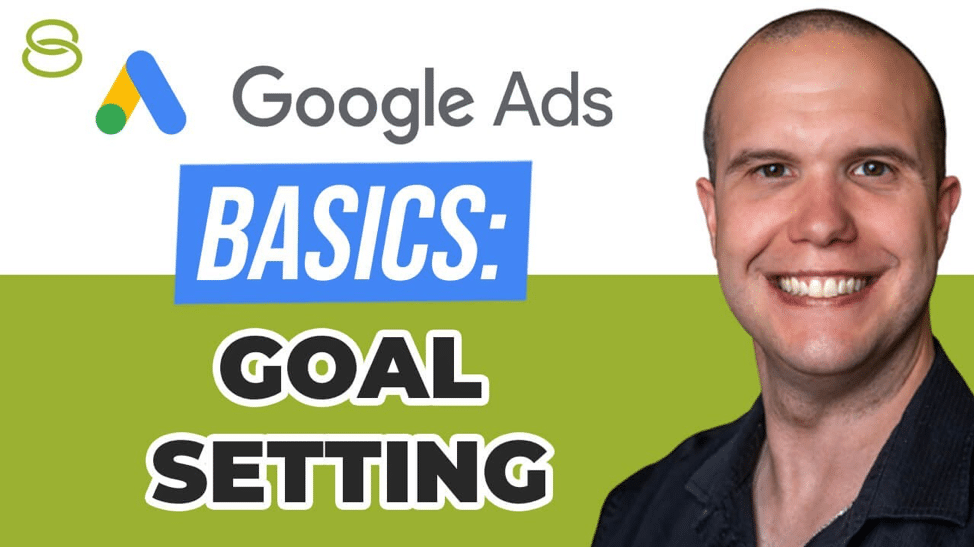When it comes to running a successful advertising campaign, setting clear goals is crucial. Without setting goals, it’s impossible to measure the success of your campaign. That’s why it’s important to have a clear understanding of what you (or your client’s) hope to achieve at first.
In this blog post, we’ll talk about:
- The Importance of Goal-Setting
- Certain Goals May be Unrealistic or Unsustainable
- Why MER (Media Efficiency Ratio) Matters
- What REALLY Matters
Let’s dive in!
The Importance of Goal-Setting
Ultimately, every business aims to get conversions that will impact its bottom line and increase its revenue.
The problem is that some businesses’ measuring success differs from others. For example, most businesses consider ROAS the only way to measure success. As long as you’re hitting your ROAS goals, you’re making money.
But that’s not entirely true. In fact, ROAS is only one of the ways to measure success, and it’s not even that accurate. You can have a low ROAS and still make more money; we’ll discuss that in more detail later.

Setting goals will help you better understand your (or your client’s) needs so you know exactly what to do to achieve them.
What if your clients don’t have goals or aren’t sure about them?
Let’s say they want you to know their goals: a 3X, a 10X, or 100X ROAS?
How do you know what’s realistic or not?
Certain Goals May be Unrealistic or Unsustainable
When setting goals, it’s important to know how realistic they are.
For example, if a client underestimates their goal, it’s important to explain why scaling up may not be possible, given the current resources or market conditions.
Conversely, if a client overestimates their goal, it’s important to explain the potential risks associated with achieving such an ambitious target.
Remember, as a PPC Manager, it can be your fault if your campaigns aren’t performing, even if they’re not entirely within your control.
That said, how do you know whether a ROAS goal is realistic or not?
You have to know your clients’ numbers. Specifically, the company’s:
- Profit Margin
- Returning Customer Break-Even ROAS
- Returning Customer Rate
- New Customer Break-Even ROAS
Once you have that information, you can use our free ROAS calculator that you can download to identify the recommended ROAS that’s profitable for your campaigns.
It will also help determine how much you (or your client) can afford to spend on advertising to achieve a certain return on investment (ROI).
By doing this, the client can see a clear path to achieving their desired ROI and make informed decisions about the campaign.
Why MER (Media Efficiency Ratio) Matters
We mentioned earlier that using ROAS alone may not be accurate enough to understand what works for your campaigns. That’s because to see what’s happening, you have to see the full picture—and this has a lot to do with attribution.
Attribution is the process of determining which ad or touchpoint was responsible for a conversion. It’s very challenging to attribute all your numbers accurately.
What you see in Google Ads may be different from what you’re getting in reality.
That’s why you have to look at your Global MER (Media Efficiency Ratio). Media Efficiency Ratio (MER) is a metric that measures the effectiveness of a media campaign. In order words, it’s the total revenue generated from a campaign to the total cost of the campaign.
If you spend $10,000 a month on Google, $10,000 a month on Facebook, and you’re making $40,000 a month, your MER is 2X. MER is the global return on ad spend—not just Google, Facebook, and Instagram, but ALL of them.
See, no one channel can ever entirely attribute a person’s interaction with a campaign.
For example, a person may have seen an ad six times on Facebook and once on Google. It’s impossible to know which channel had a more significant impact on the person’s decision to convert.
However, looking at MER can help determine whether a campaign is efficient or not.
What REALLY Matters
At the end of the day, what really matters to clients is the impact on their business.
A campaign may be hitting a target ROAS, but if the overall business hasn’t grown, the client may not be satisfied. Remember, clients care about the money in their bank account, regardless of what Google Ads reports.
For example, let’s say your client’s goal is getting a 3X. However, your campaign is only generating a 2.2X. If your overall campaign business increased by 3.2X since the start of the campaign, then your client will be happy because they can see the impact on their bottom line.
On the other hand, if you were hitting 3X but the company lost more than they spent, then your client won’t be satisfied.

Conclusion
Setting campaign goals and ROAS is critical to any digital marketing campaign. Businesses must identify their goals, calculate MER, and adjust their campaigns accordingly.
However, it’s important to understand the difference between realistic and unrealistic goals, and educate the client on the limitations and potential risks associated with different goals. This helps set and manage expectations, so you and your client can adjust accordingly.
Lastly, remember that what really matters to clients is the impact on their business. If the campaign generates revenue and helps the business grow, the client will be satisfied, regardless of whether or not it hits a specific ROAS target.
Related Blogs
Google Ads Basics Part 1: How to Track Conversions
Google Ads Basics Part 2: Understanding & Managing Your Google Ads Budget
Author
Bryan is the marketing manager at Solutions 8, and has been on digital marketing since 2018. When he’s not working, you’ll find him working out at a local gym, reading personal development books, or playing music at home. He feels weird writing about himself in third person.
 Bryan Caranto
Bryan Caranto













